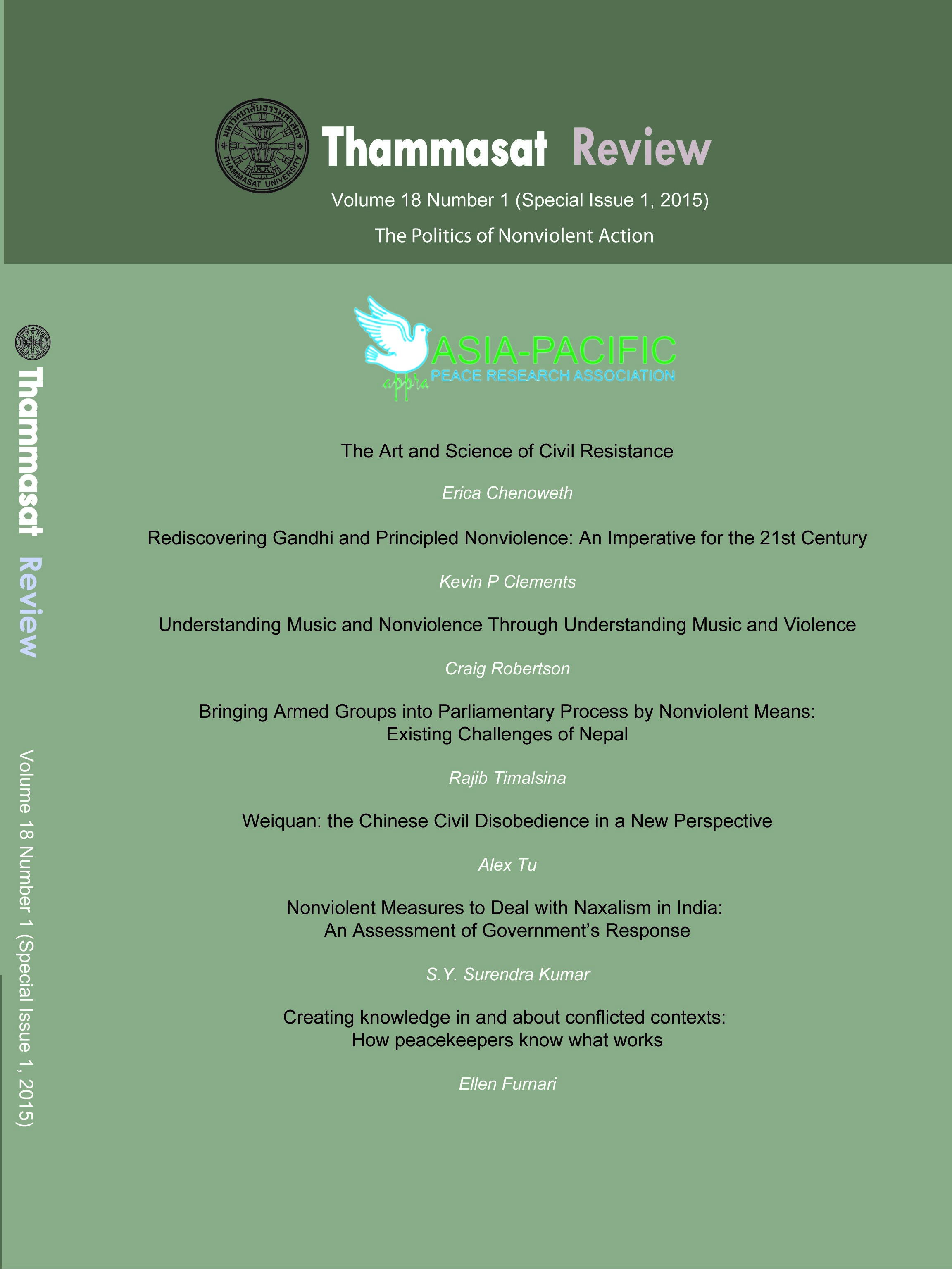Bringing Armed Groups into Parliamentary Process by Nonviolent Means: Existing Challenges of Nepal
Abstract
From 1996 to 2006, Nepal encountered an armed conflict of Maoists against the government. The aim of the conflict was believed to end social exclusion and unequal laws. The conflict with the death of more than 13,000 people ended with an agreement in 2006 through intervention of Nepal’s own political and civil society leaders. The nonviolent people’s movement in 2006 was instrumental in accelerating the transition to peace. Maoist combatants were peacefully dissolved.
Despite the achievements towards peace, there are challenges too. One of the major problems is to achieve sustainable peace at the time when the country has just emerged from the armed conflict. In this context, this paper aims to argue the major processes of bringing armed group to parliamentary process with consideration to the success of the nonviolent movement. Further, the paper also tries to discuss the role played by different stakeholders, and the existing scenario of the country in the more than seven year long transition as the limitation after the success of the nonviolent struggle.
Keywords: Nepal’s Brief History, Nonviolent Movement, Peace Process, Existing Challenges
Downloads
How to Cite
Issue
Section
License
The opinions and ideas expressed in all submissions published in Thammasat Review are solely that of the author(s) and do not necessarily reflect that of the editors or the editorial board.
The copyright of all articles including all written content and illustrations belong to Thammasat Review. Any individuals or organisation wishing to publish, reproduce and distribute a particular manuscript must seek permission from the journal first.








